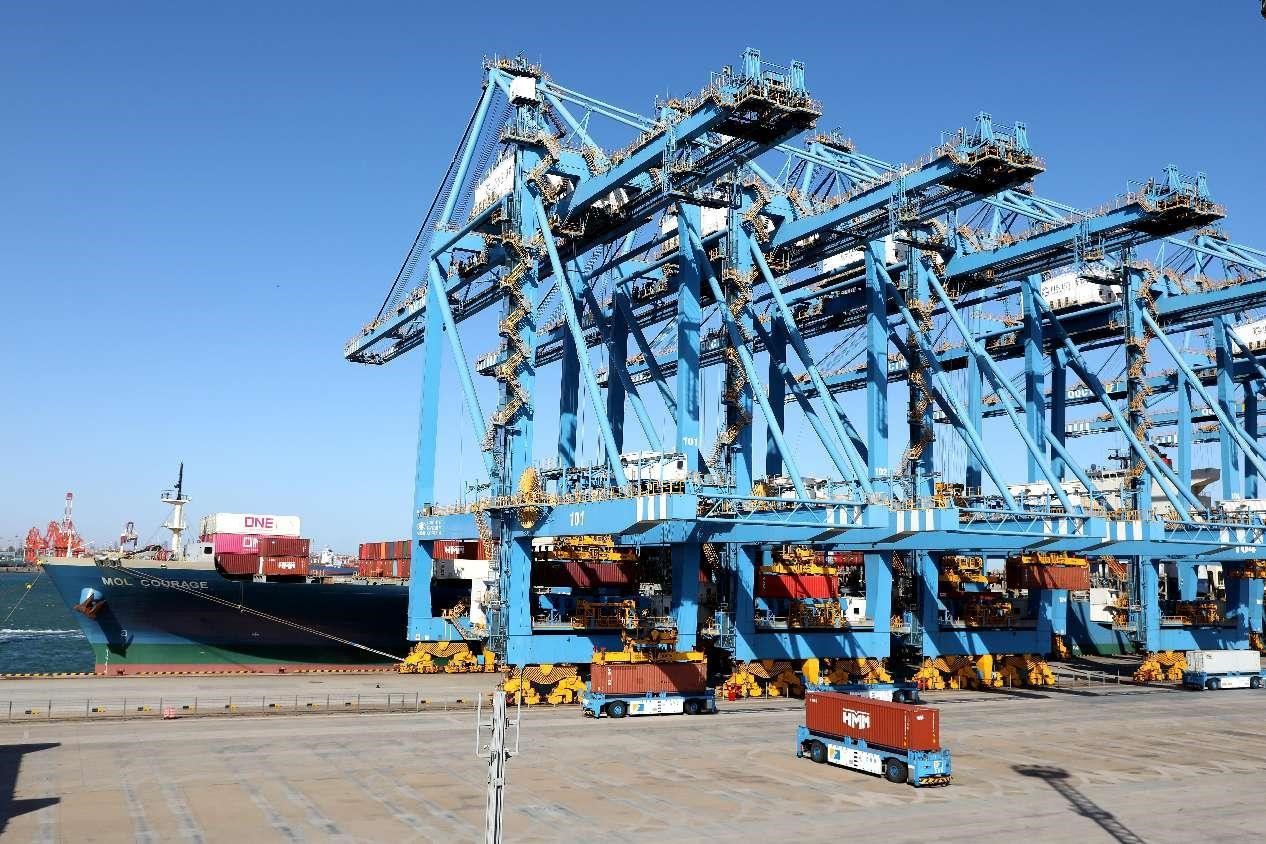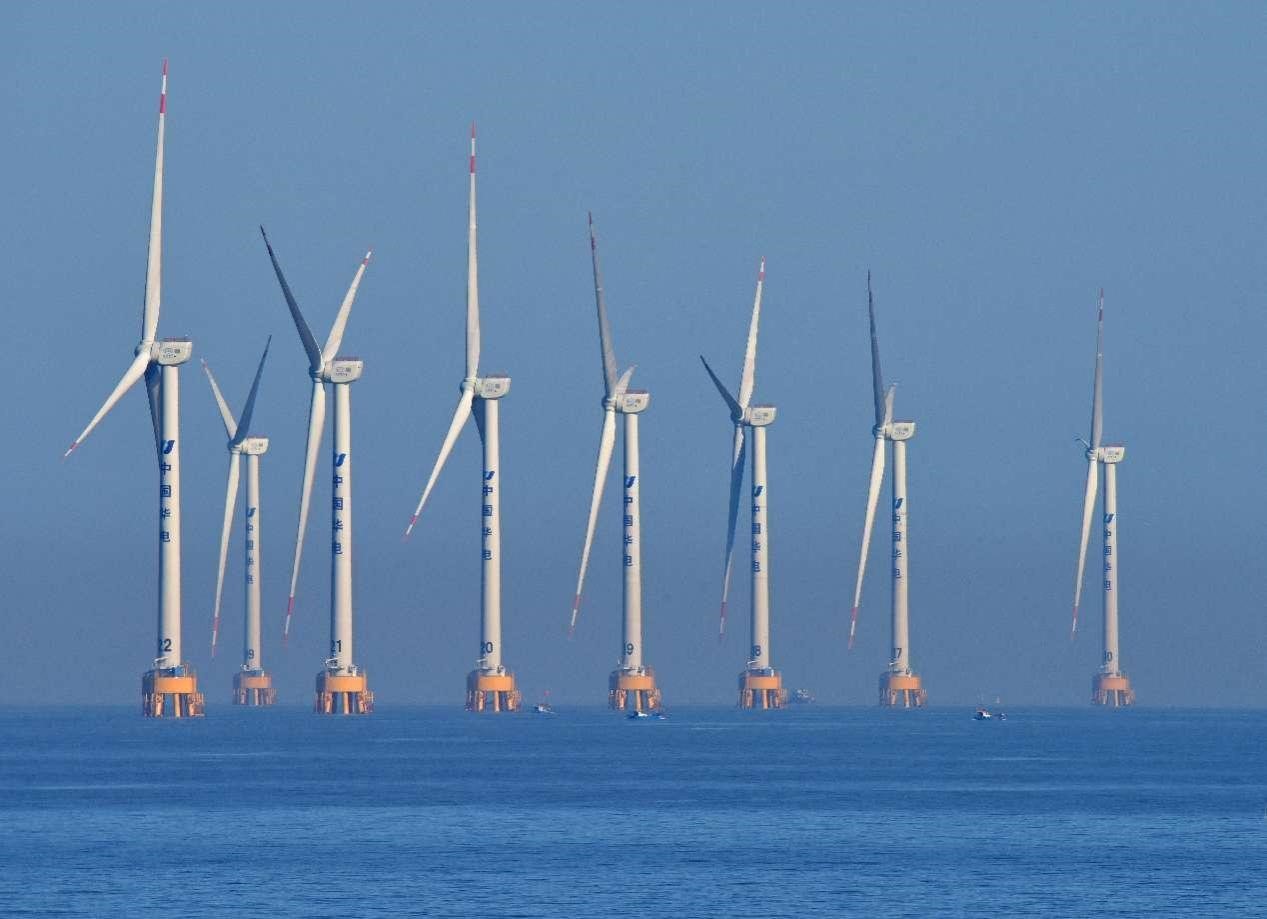China's marine economy continues to expand with diverse highlights

Farmers fish for seafood at a deep-sea marine aquaculture base in waters in Caotan township, Zhanjiang city, south China's Guangdong province. (People's Daily Online/Fu Haiyan)
China's gross ocean product grew 5.8 percent year on year to 7.2 trillion yuan ($1 trillion) in the first three quarters of 2023, indicating that the country's marine economy has maintained its positive overall recovery momentum.
The country's traditional marine industries have shown strong growth momentum. In the first three quarters of this year, China remained a global leader in terms of seagoing vessel market share, with new orders for seacraft growing faster and shipbuilding companies seeing continuous rebound in their economic benefits, according to Cui Xiaojian, deputy director of the National Marine Data and Information Service.
"New orders for seagoing vessels, seacraft output, and the number of sea ship orders in the hands of shipbuilders nationwide increased by 40.2 percent, 23.3 percent and 34.3 percent year on year, respectively," Cui said.
"In particular, there has been a significant increase in the number of high-tech and high value-added ships delivered during the period. And a batch of container vessels with a TEU (20-foot equivalent unit) capacity of 24,000, LNG dual-fuel powered bulk carriers, and gas carriers were also delivered during the first three quarters," Cui added.
The country's marine tourism industry has strode into a new stage of full recovery, witnessing a 121 percent year-on-year growth in marine passenger volume in the first three quarters of this year, which has exceeded the level of the same period in 2019.
China's marine resource supply capacity has steadily improved. In the first three quarters of 2023, 1,219 projects of sea area and island use were approved nationwide, up 4.6 percent year on year. These projects involve combined investment totaling over 600 billion yuan.
The country has made continuous efforts to increase its offshore oil and gas reserves and production. In the first three quarters of 2023, its offshore crude oil and natural gas production grew by 4.6 percent and 9.7 percent, respectively, compared to the same period last year, while multiple projects were completed and commenced production in the country.

A cargo vessel is being loaded at the automated terminal of Qingdao Port in east China's Shandong province. (People's Daily Online/Wang Peike)
The construction of the country's "blue granary" has been steadily advanced in the first three quarters of this year, when the growth rates of domestic marine aquatic products output and mariculture output both exceeded 5 percent year on year.
The country's ever-growing emerging marine industries and continuously improving capability of marine scientific and technological innovation have become the highlights of its marine economic growth in the first three quarters of this year.
China's marine engineering equipment manufacturing industry has continued to improve. The industry's value of delivered orders for marine engineering equipment increased by 50 percent year on year in the first three quarters of 2023, accounting for 64.3 percent of the international market share of marine engineering equipment.
Meanwhile, seawater desalination projects in Hebei province, Tianjin municipality, Shandong province, Jiangsu province, Zhejiang province and other regions across the country have been steadily advanced, with the scale of projects under construction and newly started exceeding 300,000 tonnes per day.
The country has constantly made breakthroughs in the development of marine renewable energy.
It has accelerated the construction of offshore wind power projects. In the first three quarters of 2023, the combined capacity of relevant projects under construction and newly started was about 19.4 million kilowatts, an increase of about 2 million kilowatts over the same period last year.
At the same time, the capacity of offshore wind power projects newly connected to China's power grids and the country's power output from offshore wind power projects during the period posted year-on-year increases of 14.8 percent and 19.2 percent, respectively.

Photo shows a wind farm of China Huadian Corporation Ltd., a major state-owned power producer, in Aiwan Bay of Yuhuan city, east China's Zhejiang province. (People's Daily Online/Duan Junli)
Following the stable commercial operation of tidal energy projects, ocean thermal energy and wave energy have also entered project operation or power generation testing successively.
China has continuously made new progress in its basic research in marine science. It has launched the intelligent test task support ship Xiang Zhou Yun; put into service the undersea seismic data exploration and acquisition equipment Haimai, or "Sea Pulse"; and developed the first domestic 6,000-meter deep in-situ corrosion damage monitoring experimental cabin.
Production technologies in China's marine industry have also experienced continuous improvement. The country's first set of domestic 18-megawatt offshore wind turbine main shaft bearings has successfully rolled off production line; its 2,500-tonne self-propelled jack-up offshore wind power installation platform Haifeng 1001 was officially delivered; and the construction of the main hull structure of the Haiyang Shiyou 122, Asia's first cylindrical floating, production, storage, and offloading (FPSO) facility, has been completed in China.
“In the first three quarters, foreign trade cargo throughput at coastal ports increased by over 10 percent year on year. However, the total value of marine imports and exports decreased by 1.3 percent from the same period last year, due to factors such as falling prices of bulk commodities and exchange rate fluctuations,” said He Guangshun, director of the marine strategic planning and economics department of China's Ministry of Natural Resources.
China's maritime trade routes have become increasingly dense, effectively facilitating the development of the Belt and Road Initiative.
Liaoning Port Group in northeast China's Liaoning province launched a new route shipping steel between South America and Yingkou Port in Yingkou city, Liaoning province; Dalian Port in Dalian city, Liaoning province, put into operation a shipping route linking Dalian and the Philippines; and the opening ceremony of the shipping route between China's Fangchenggang Port and Cambodia's Dara Sakor international port was held at Fangchenggang port, a part of Beibu Gulf Port in south China's Guangxi Zhuang autonomous region.
The infrastructure of coastal ports in China has continued to be upgraded. The Phase II project of a 300,000-tonne crude oil wharf of Yantai Port in Yantai, east China's Shandong province, was officially put into operation; Beibu Gulf Port has significantly improved port cargo handling timeliness, accuracy and cargo transfer efficiency through its intelligent cargo handling system; Qingdao Port in Qingdao, Shandong province, has officially put into use its first automated ship loader, greatly improving loading and unloading efficiency...
With China's macro policies continuously boosting the confidence of business entities, the country's marine industry will enjoy a stronger endogenous driving force, and China's marine economy is expected to maintain its momentum for steady growth throughout the year, He noted.
Photos
Related Stories
- A glimpse into China Marine Equipment Expo 2023
- 2023 East Asia Marine Expo opens in Qingdao, E China
- Marine technology makes Greater Bay Area greener, safer
- Methane from Nord Stream leakages may threaten ecosystem: research
- New Zealand biologist describes journey to ocean's deepest region as "incredible"
Copyright © 2023 People's Daily Online. All Rights Reserved.









